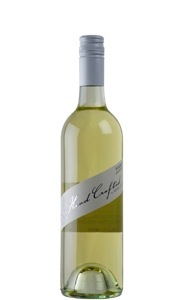 Fiano from the Adelaide Hills by Geoff Hardy. Fruity little number. I’m not convinced that it plays to the grape’s strengths. Of course Andrew Jefford believes “we’d be wiser wine lovers” if “we were to regard place and the cultural traditions of place as the primary translators of wine flavour, and variety as secondary and anecdotal”. Jefford extends his critique of “varietal thinking” to include structure and texture later in the same article.
Fiano from the Adelaide Hills by Geoff Hardy. Fruity little number. I’m not convinced that it plays to the grape’s strengths. Of course Andrew Jefford believes “we’d be wiser wine lovers” if “we were to regard place and the cultural traditions of place as the primary translators of wine flavour, and variety as secondary and anecdotal”. Jefford extends his critique of “varietal thinking” to include structure and texture later in the same article.
You’ll get no argument from me over the idea that wine writers, consumers and critics over valorise varieties and tend to give insufficient attention to place and culture. Australia is notorious for this. But to reduce the grape to an “anecdotal” position within a hierarchy is reductive and simplistic – albeit totally in line with Jefford’s consistent rhetorical stance. The interaction of variety, place and culture deserves more rigorous attention. The grape or variety is a tool used and often consciously chosen to represent place via the mediation of culture – the vigneron’s idea of what will best enable them to bring their vision of the place to fruition. And it is a very important tool at that. While I continue to question the merits of judging wine based on varietal correctness it’s quite ridiculous to postulate that the cultivar is of little importance and is in fact referred to purely out of a “longing for conceptual simplicity”. Grape physiology matters.
What do I like about this Fiano by Geoff Hardy? Its slightly waxy and almost gelatinous texture (which is common in Australian Fianos and is referred to as character of the grape in Jancis Robinson et al’s “Wine Grapes” compendium), its body (also referred to as a character of the cultivar in the same book) and its slightly briney flavour, which I usually see in both McLaren Vale and Adelaide Hills Fianos. What detracts from the wine? An undifferentiated and simple tropical fruit visage and a bitter herbal character. It’s a solid wine and no more. I think its virtue lies in the variety chosen more than the place it was grown or the manner in which it was vinified. All three factors though – variety, place and culture – are of significant importance to the way the wine presents. 87
Region: Adelaide Hills
Alcohol: 13.0%
Closure: Screwcap
Price: $25
Tasted: November 2013

With full knowledge of your theoretical background, I suggest your position is that biology matters just a little bit, no?
I have a sneaking suspicion that it is fairly significant
Gasp
I know. Such radical thinking is surely dangerous!
That’s a very good intro. Nice one.
Thanks GW. I thought about writing a longer post in reply to Jefford’s position but hoped that this would cover my misgivings…and save me a little time.
All these wines in the Hand Crfated label are super good, and worthy of real respect. Methinks the producer would make more inroads with them if they stopped the practice of submitting them to retailers at regular RRP on one hand, whilst selling them through Cracker for a fraction of the price with the other. Some of the best wines in this range are simply untouchable as a result. More’s the pity.